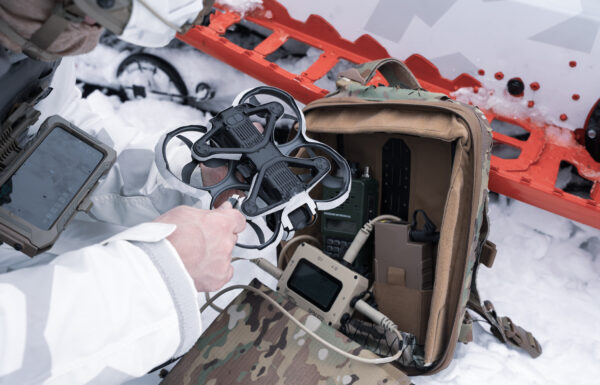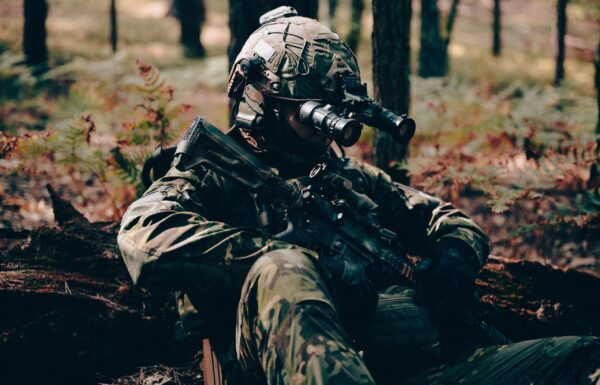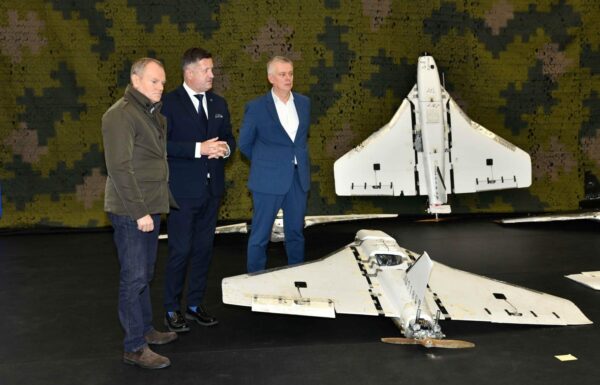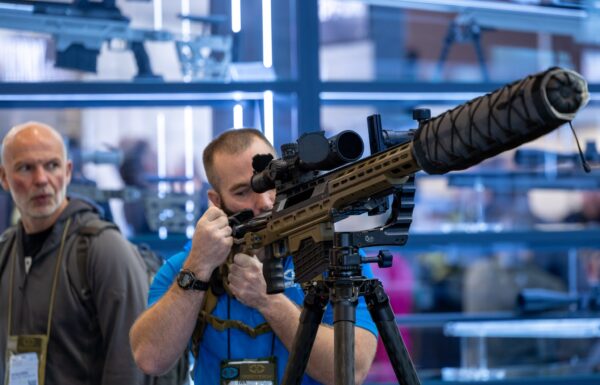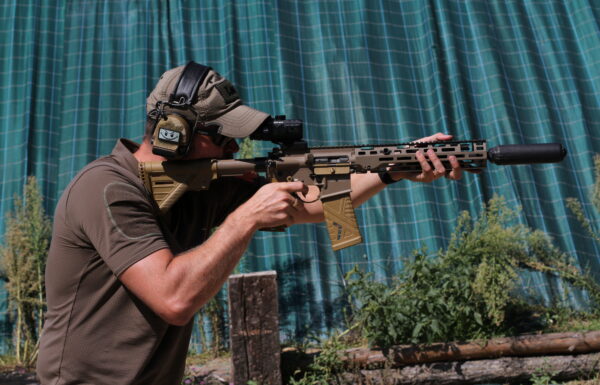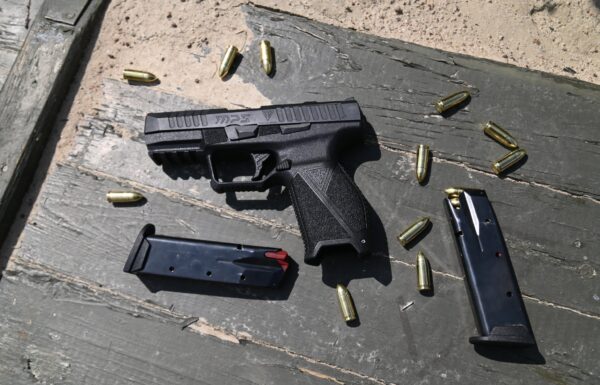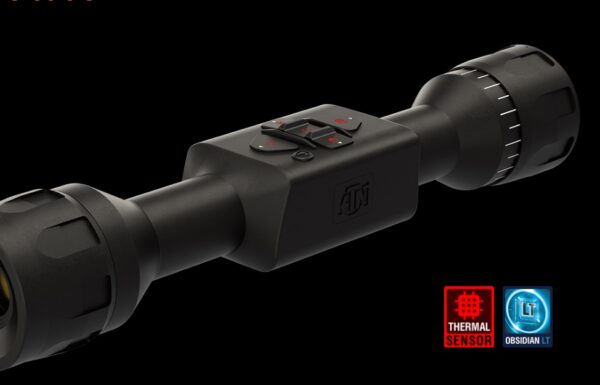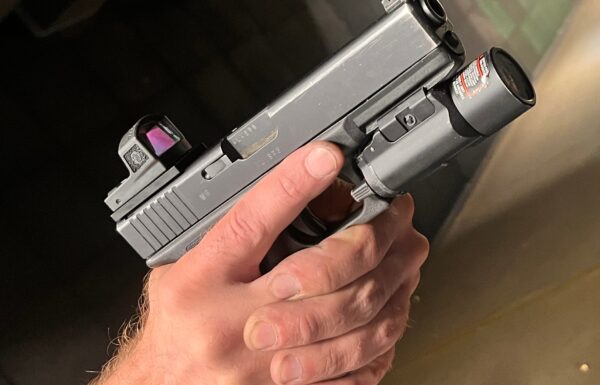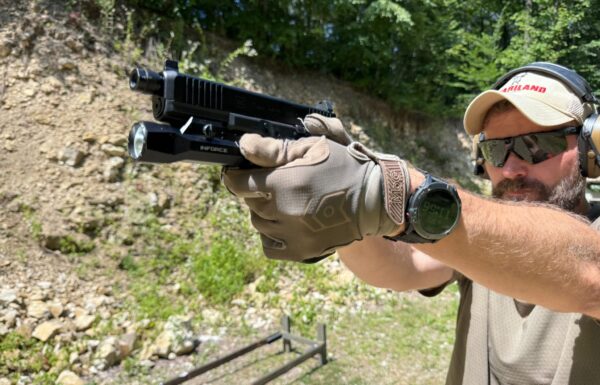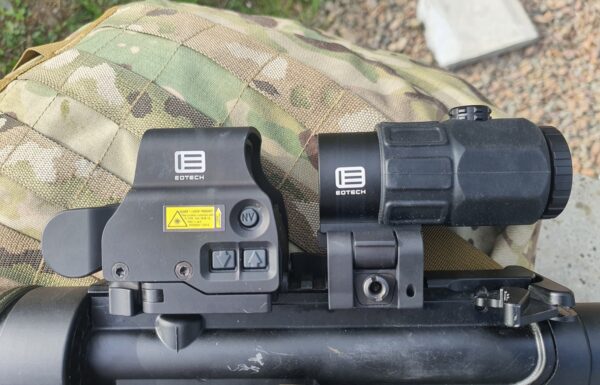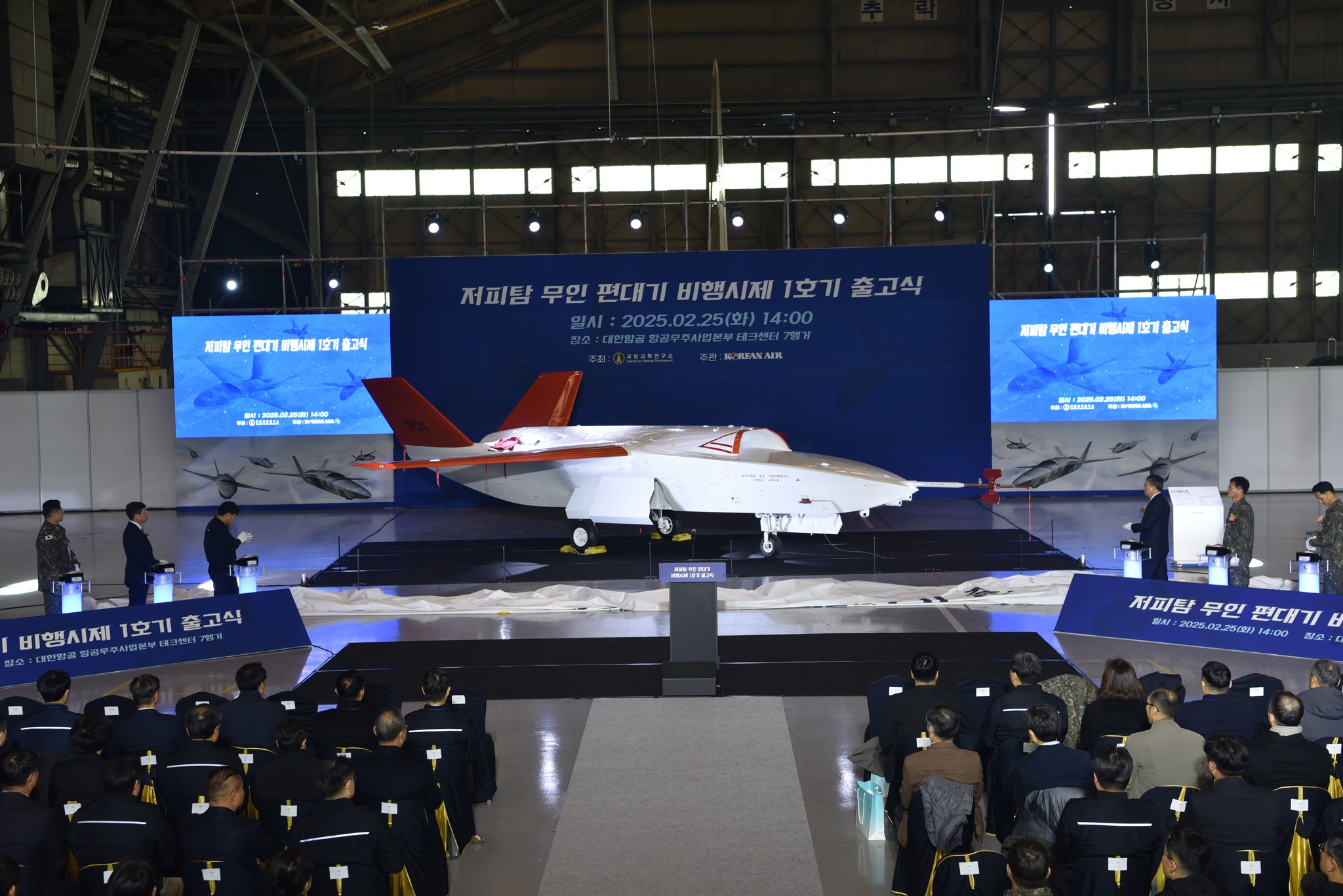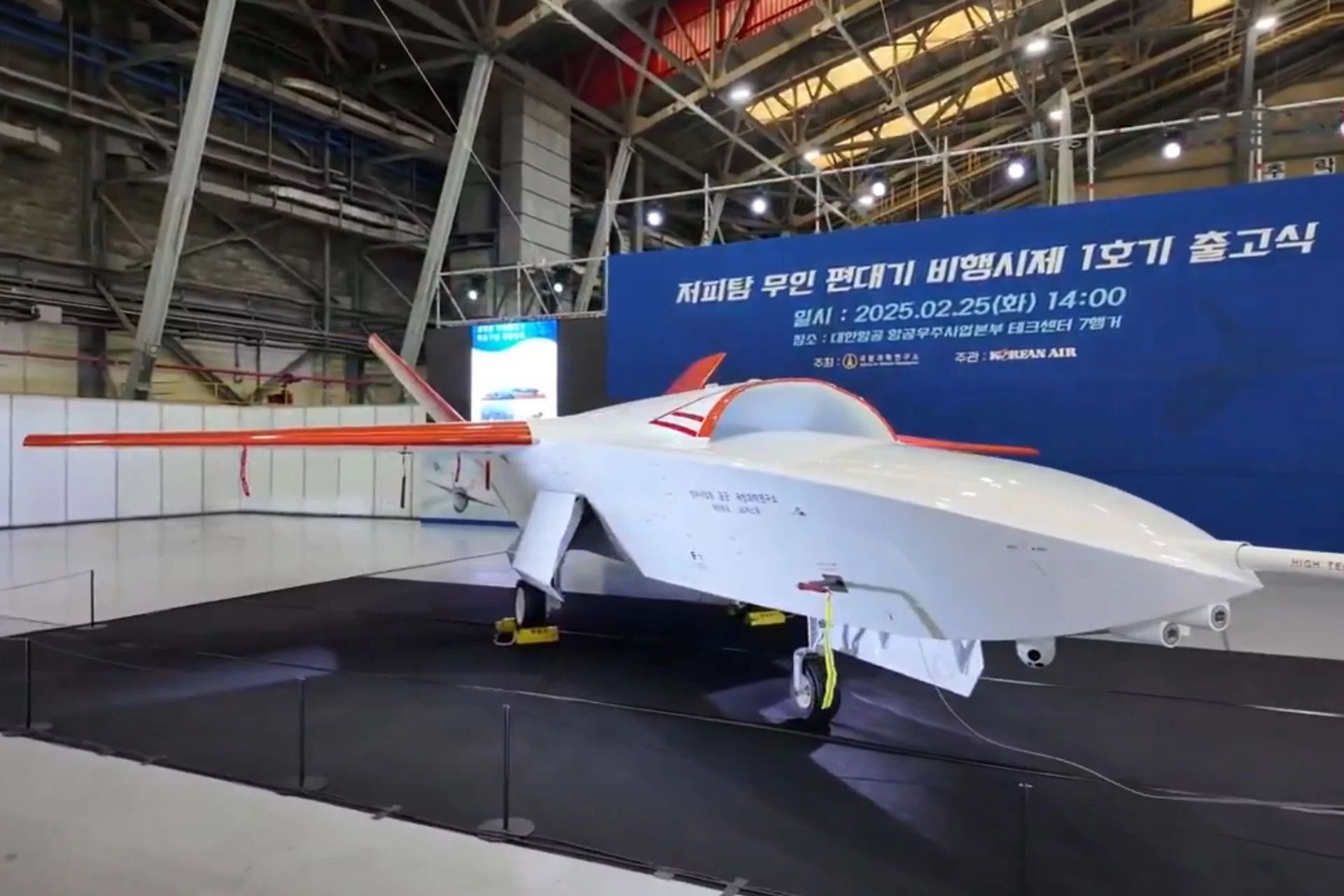On Tuesday, February 25, 2025, at 2:00 PM local time, the South Korean Agency for Defense Development (ADD) and the Korean Air Aerospace Division (KAL-ASD) research institute unveiled a technology demonstrator of the LOWUS (Low Observable Unmanned Wingman System) combat UAV at the Korean Air Tech Center in Busan. The system is designed to serve as a Loyal Wingman for the KAI KF-21 Boramae multirole fighter.
The event was attended by approximately 300 guests from the military, industry, academia, and research sectors, including Lee Jeong-seok, Deputy Director of the Agency for Defense Development (ADD); Jeong Jae-jun, Director of the Future Energy Business Support Division at the Defense Acquisition Program Administration (DAPA) of the Ministry of National Defense of the Republic of Korea; and Lim Jin-gyu, Director of the Korean Air Aerospace Division.
The LOWUS program was launched in 2021 as part of the Future Challenge Defense Technology research and development initiative. The first flight of the initial prototype is reportedly planned for late this year, leading to initial flight tests with the KF-21 by 2027. These tests will involve a manned aircraft directly controlling the UAV in flight.
DAPA expects that in the future, the LOWUS UAV will also be able to cooperate with upgraded KAI FA-50 Block 20 light combat aircraft, known in Poland as the FA-50PL.
LOWUS is a low-observable unmanned aerial vehicle (UAV) designed to operate in formation with a manned multirole aircraft, autonomously carrying out missions such as reconnaissance, electronic warfare, and strike operations under the supervision of a pilot.
LOWUS is also a groundbreaking innovation, as it represents South Korea’s first MUM-T (Manned/Unmanned Teaming) concept project, integrating cooperation between manned and unmanned aircraft.
The Agency for Defense Development (ADD) is developing key technologies for UAVs, including a turbofan engine and an AESA (Active Electronically Scanned Array) radar, with the support of DAPA (Defense Acquisition Program Administration).
Park Jun-seong, a senior researcher at the Agency for Defense Development, stated:
“We plan to respond to future battlefield changes by developing an advanced combat system integrating both manned and unmanned aircraft. We will make every effort to become a global leader in the field of complex fighter systems, where fierce competition is taking place worldwide, through collaboration with domestic defense companies.”
 Previous visualization of LOWUS / Graphic: KAL-ASD
Previous visualization of LOWUS / Graphic: KAL-ASD
In terms of overall configuration, LOWUS is similar to the American XQ-58A Valkyrie, developed by Kratos Defense & Security Solutions, in terms of its top-mounted air intake, and to the Australian MQ-28A Ghost Bat, developed by Boeing Australia, in terms of its wing design.
Interestingly, a competing design is being promoted by the KF-21 manufacturer, Korea Aerospace Industries (KAI). This alternative project, NGUF, has so far only been presented as a mock-up.
It’s also worth noting that KAI is separately working on the integration of LAH-1 Miron light attack helicopters, developed under the Korean Helicopter Program (KHP), with unmanned aerial platforms as part of the MUM-T (Manned/Unmanned Teaming) concept.
Additionally, the Korean Air Aerospace Division research institute already has experience with low-observable unmanned aerial platforms. It is believed that the Kaori-X (Korean for “Stingray”) technology demonstrator, unveiled in August 2020 and first flown on December 23, 2021, paved the way for the development of the recently revealed LOWUS aircraft. Work on Kaori-X began in 2016.
The institute, which specializes in UAV development (such as the KUS-VH 500MD unmanned helicopter), has also showcased the KUS-FC flying wing concept. Additionally, during the September 2023 military parade in Seoul, a much smaller flying-wing UAV of an undisclosed name was also presented.
https://twitter.com/fa50_defense/status/1894266244754477277


